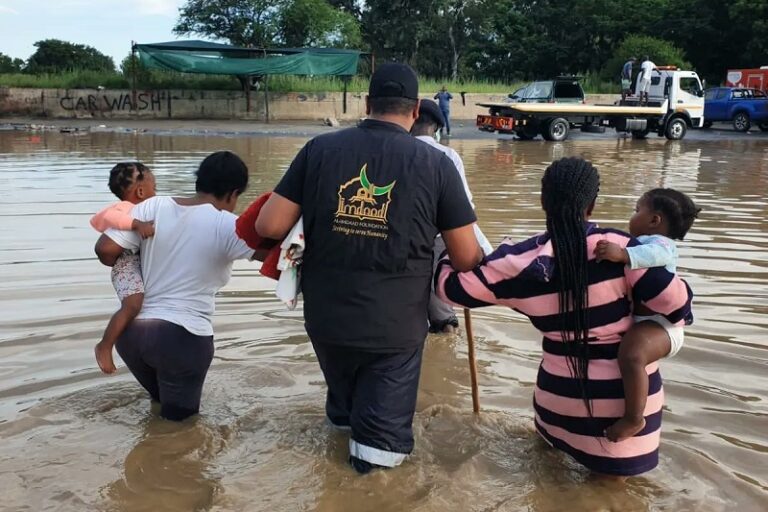

floods in seven provinces prompt a disaster declaration in south africa
Flooding brought on by heavy rains over the past several days prompted South Africa to proclaim a state of national disaster on Monday night. Crisis management centers in many provinces say that seven people have already died and that others have gone missing because of the flooding.
The effect of the floods has prompted the government to declare a state of national calamity, according to a statement issued by the presidency. This will allow for a more sustained and coordinated response to the flooding. The death toll on a nationwide scale is not yet available. However, the unfavorable weather poses a risk to seven of the country’s nine provinces, primarily those that are located on the east coast and have access to the Indian Ocean.
According to Nonala Ndlovu, spokeswoman for the disaster management center of the coastal province of KwaZulu-Natal, who talked with AFP, at least five people passed away in the province of KwaZulu-Natal (KZN, south-east). According to a statement, one of the victims is a newborn baby who passed away as a result of the flooding that occurred in a house. Also, many people have been reported missing after trying to cross a flooded river.
According to the authorities in the area, two more individuals were killed in the neighboring province of Mpumalanga, which is located in the northeastern part of the country. It was said that damage had been done to a hospital in the province of Limpopo (north), which borders Zimbabwe.
Automobiles were swept away, and roads, bridges, and other infrastructure were devastated. The office of the president issued a statement in which it stated that “farmers have experienced crop and livestock losses.” Due to the severe weather, it will be necessary to provide “temporary shelter, food, and blankets to people who have lost their homes, in addition to the costly and large-scale reconstruction of infrastructure.” The National Weather Service has issued a flood watch for the next few days. They say that flooding could happen because of “waterlogged soils and saturated rivers.”
In 2017, South Africa was hit by the greatest flooding in its history. The city of Durban (KZN), which is the country’s third-largest city and a key port on the continent, was particularly hard hit by the flooding. Powerful mudslides were caused by persistent rain that washed away large communities along with their inhabitants, bridges, and roadways. More than 400 people were killed and more than 85,000 were injured as a result of the storms.
Read More:- Top 10 Loved-Up Locations To Visit On Valentine’s Day In South Africa
Canadian companies have expanded their presence as major African mining stakeholders and invested more than $37 billion. Africa holds the…
The South African government wants people to plant one million trees across the nation within a single day on September…
The government's statistics regulator showed that South African inflation stayed at 3.2% during February and rose below the projected 3.3%.…
Keywords: Cape Town, African Energy Chamber, Africa, The 2025 African Energy Week (AEW) will host the top energy leaders from…
Recent research shows that Professor Abdessamad Faik believes Africa is at an important energy choice point as renewable-powered hydrogen allows…
The United States plans to shut down its Johannesburg consulate after Sandton Drive gets renamed to Leila Khaled Drive even…
This website uses cookies.